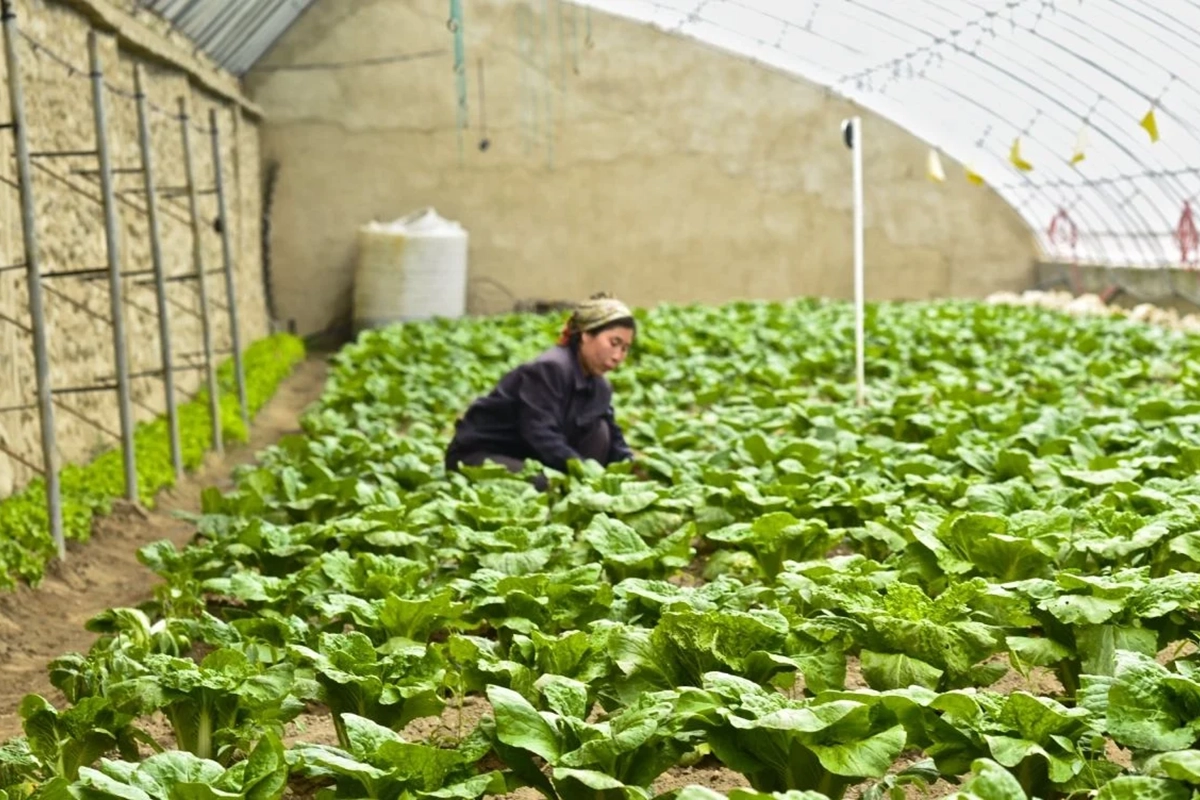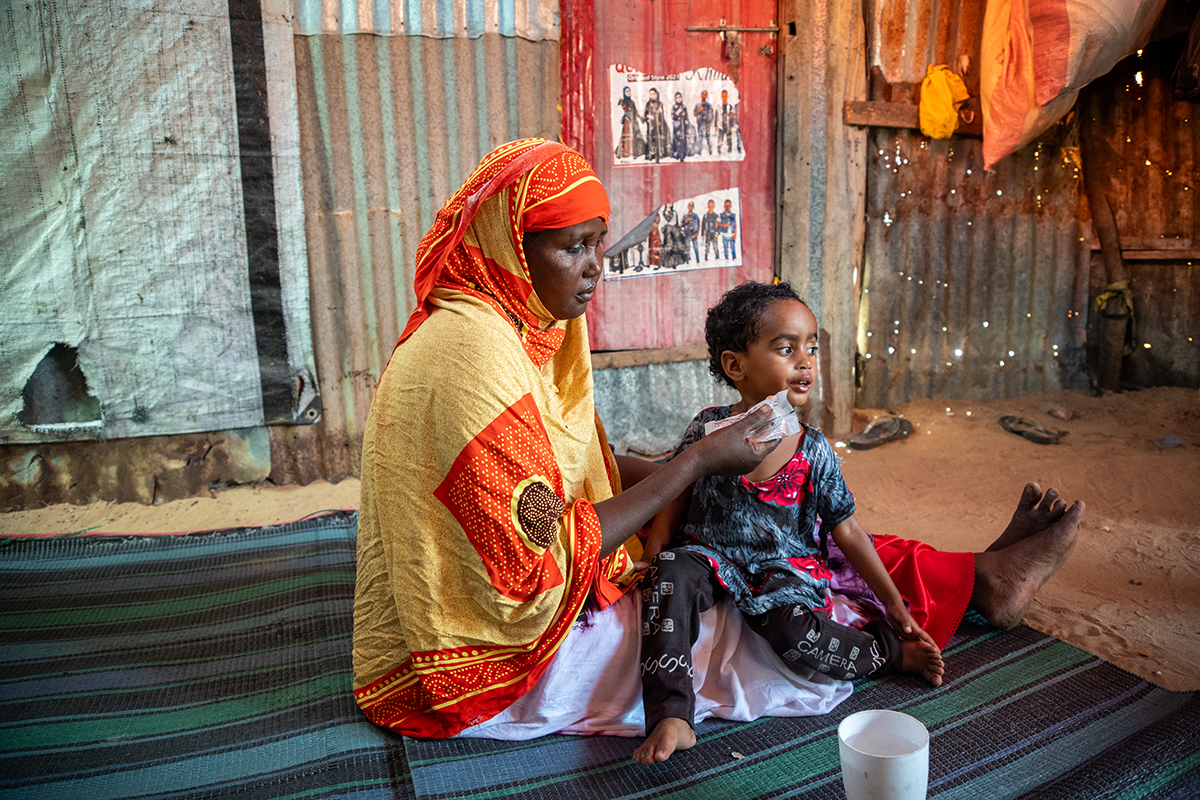News
Hunger in Haiti, explained
Reports suggest that people in parts of the Haitian capital, Port au Prince, are now living in famine-like conditions. Shocking as it may seem, this is a crisis that has been in the making for years.
Read MoreProduced annually by Concern Worldwide and Welthungerhilfe, the Global Hunger Index examines the available data for hunger levels around the world. Those levels are highest in these ten countries.
The world produces enough food to feed all of its inhabitants. Yet 733 million people around the globe lack access to sufficient calories and nutrients, and 2.8 billion cannot afford a healthy diet.
Hunger is an issue in every country around the world, but some countries experience it at larger levels of crisis than others. Based on the 2024 Global Hunger Index, published by Concern Worldwide and Welthungerhilfe, these are the ten hungriest countries in the world in 2024.

Chronic food insecurity and childhood malnutrition are widespread in the Democratic People’s Republic of Korea (DPRK). The country ranks highest in the 2024 Global Hunger Index for undernourishment, which affects over 53% of the country’s population.
» Learn more about Concern’s work in the DPRK

For more than a decade, a widespread humanitarian crisis in the Central African Republic has left one out of every four people displaced and one-third of the country hungry. In 2021, Concern’s Pauline Carron gave this explanation on the link between conflict and hunger in the country: “When people need to move to escape the violence, they may lose access to their lands. If they can come back, they might have lost what they’ve grown, and if they missed the harvest season, they’re into the lean season without any food reserves. It’s very difficult to survive if they don’t have their own food.”
This has a very real effect on the country’s (largely young) population of 6.1 million. Nearly one out of every ten children in CAR won’t live to see their fifth birthday, and 40% are stunted due to malnutrition.
» Learn more about Concern’s work in the Central African Republic

Over the last two decades, Liberia has recovered from a 14-year civil war (which destroyed infrastructure and shattered the country’s economy), the world’s largest Ebola outbreak, and the knock-on effects of the COVID-19 pandemic. Despite tremendous progress, over half of all Liberians still live below the poverty line, and nearly just as many (47%) are food-insecure — a clear example of the link between poverty and hunger. Agriculture is the main source of income for many Liberians, and the effects of the climate crisis have left many farmers coming up short during harvest seasons. This in turn has led to an undernourishment rate in the country of over 38%.
» Learn more about Concern’s work in Liberia

Niger is a landlocked country predominantly located in the Sahara Desert, leaving only one-eighth of the country’s land considered arable. However, 80% of the Nigerien workforce relies on agriculture and livestock for their food and livelihoods, a situation further complicated by the effects of climate change in recent years. At the beginning of this year, the Integrated Phase Classification (IPC) estimated that 3.2 million Nigeriens — just over 10% of the population — would face high levels of food insecurity.
In the 2024 Global Hunger Index, Niger ranks third-highest in the world for child stunting rates (over 47% of all children), tenth highest for child wasting rates (nearly 11% of all children), and first for child mortality rates, with nearly 12% of all children not living to see their fifth birthday.
» Learn more about Concern’s work in Niger

A protracted humanitarian crisis in Haiti has led to the rising threat of famine in the country, with the IPC reporting earlier this year that over 14% of the country’s population is at emergency levels of food insecurity (one step below famine or famine-like conditions). The 2024 GHI reports that undernourishment in the country has risen by more than ten percentage points between 2017 and 2023, with over 50% of the country undernourished.
These rising hunger rates are fuelling the country’s crisis of violence, which in turn fuels the high rates of food insecurity. However, this isn’t the only cause of hunger in Haiti: erratic rainfall, rampant inflation, political turmoil, and internal displacement are also key, interrelated factors.

Like Haiti, an ongoing crisis in the Democratic Republic of the Congo has left hunger rates climbing in the country amid protracted violence and civil strife. An increase in violence in the country’s eastern provinces this year has contributed to a quarter of the population (some 25 million people) facing high levels of food insecurity.
Outside the most fragile areas, the DRC also has a volatile national economy, which has a major effect on food prices. At the end of 2023, the Congolese franc’s inflation rate stood at 23%, over two percentage points above the target of 20.8%. In November of 2023, the price of staples including beans, corn flour, vegetable oil, and rice were, on average, 51% higher than last year’s rates, and 101% higher than the five-year average. With nearly 75% of the country living below the international poverty line, these fluctuations have dire consequences.
» Learn more about Concern’s work in Democratic Republic of the Congo
Climate change and hunger go hand-in-hand in many of the countries on this list, and the island nation of Madagascar is no exception. The country relies heavily on rain-fed agriculture, which is under increasing threat from climate shocks, particularly in the south which has been affected by recurrent drought. (The southeastern region has also faced an increasing amount of severe cyclones.) The country has the eighth-highest stunting rates for the 2024 GHI, with the condition affecting nearly 40% of all children. It also has the fourth-highest rate of undernourishment, also affecting nearly 40% of all residents (adults and children). Economic shocks have also made it hard for families to afford food among rising prices and other issues including gender inequality.

Sitting at the nexus of climate change, conflict, instability, and inequality, Chad is a mainstay on the Global Hunger Index. While it has made progress in some areas, it still has the fourth-highest child mortality rate, with more than one out of every ten children not reaching their fifth birthday. In February 2024, the Government of Chad declared a food security and nutrition emergency, with the IPC projecting that approximately 17% of the country are facing hunger.
Chad has also historically been a major host community for those fleeing conflict and instability in neighboring countries. In 2023, its refugee community grew following the onset of conflict in Sudan.
» Learn more about Concern’s work in Chad

Prior to the current crisis in Yemen, the country relied on imports for 70% of its food needs, including 90% of the country’s main staple (wheat) and 100% of its rice, tea, and sugar. Since the onset of conflict in 2014, it has faced severe food shortages related to restrictions on trade and international access, leaving it consistently among the hungriest countries in the world. In 2024, Yemen has the second-highest child stunting rates (nearly 49%), the third-highest child wasting rate (over 16%), and the fifth-highest undernourishment rate (over 39%).
However, as the 2024 GHI report notes, progress towards ending hunger in Yemen has been stalled for two decades. Climate change has affected life for 70% of Yemenis, who live in rural areas and rely on agriculture for their food and livelihoods. Droughts, water scarcity, and the increasing cost of farming supplies all present huge challenges.
» Learn more about Concern’s work in Yemen

Despite significant progress made since 2000, Somalia is facing a protracted hunger crisis driven by ongoing conflict, economic challenges, and the climate crisis — all in the larger context of a government with limited capacity to carry out basic functions and key emergency response. At the beginning of this year, the UN estimated that 4.8 million people (out of a country of 18.7 million) would require nutrition support, and an additional 4.3 million would require humanitarian assistance in the area of food security.
The country is also still recovering from the Horn of Africa crisis, which left some regions at high risk for famine. In the meantime, it has the seventh-highest child wasting rate (nearly 12%), the second-highest undernourishment rate (over 51%), and the third-highest child mortality rate (over 10%).
» Learn more about Concern’s work in Somalia
There are many countries where hunger is widespread, but where data is insufficient to properly rank them on the Global Hunger Index. (Learn more about how we measure hunger here.) This year, we were unable to gather sufficient data on South Sudan and Burundi, but based on what was available, both countries could be at the top of this list.
Additionally this year, with many conflicts developing at a rapid pace, our data does not reflect the current situation in Sudan or the Occupied Palestinian Territory, both of which are, as of this writing, experiencing famines confirmed by the IPC and UN.
From Afghanistan to Yemen, Concern’s Health and Nutrition programs are designed to address the specific, intersectional causes of hunger and malnutrition in each specific context. Our projects often combine two or more of the following areas of focus: agriculture and climate response, maternal and child health, education, livelihoods, and water, sanitation, and hygiene (WASH).
We played a key role in developing Community Management of Acute Malnutrition (CMAM), which has been recognized by the World Food Program as the gold standard for treating malnutrition. Other recent successes, like Lifesaving Education and Assistance to Farmers (LEAF) have seen entire communities not needing humanitarian food aid for the first time in decades due to holistic and systemic shifts in agricultural practices and community care.
Last year alone, Concern reached 9 million people with health and nutrition programs in 21 countries. Your support can help us to do even more in the year ahead.